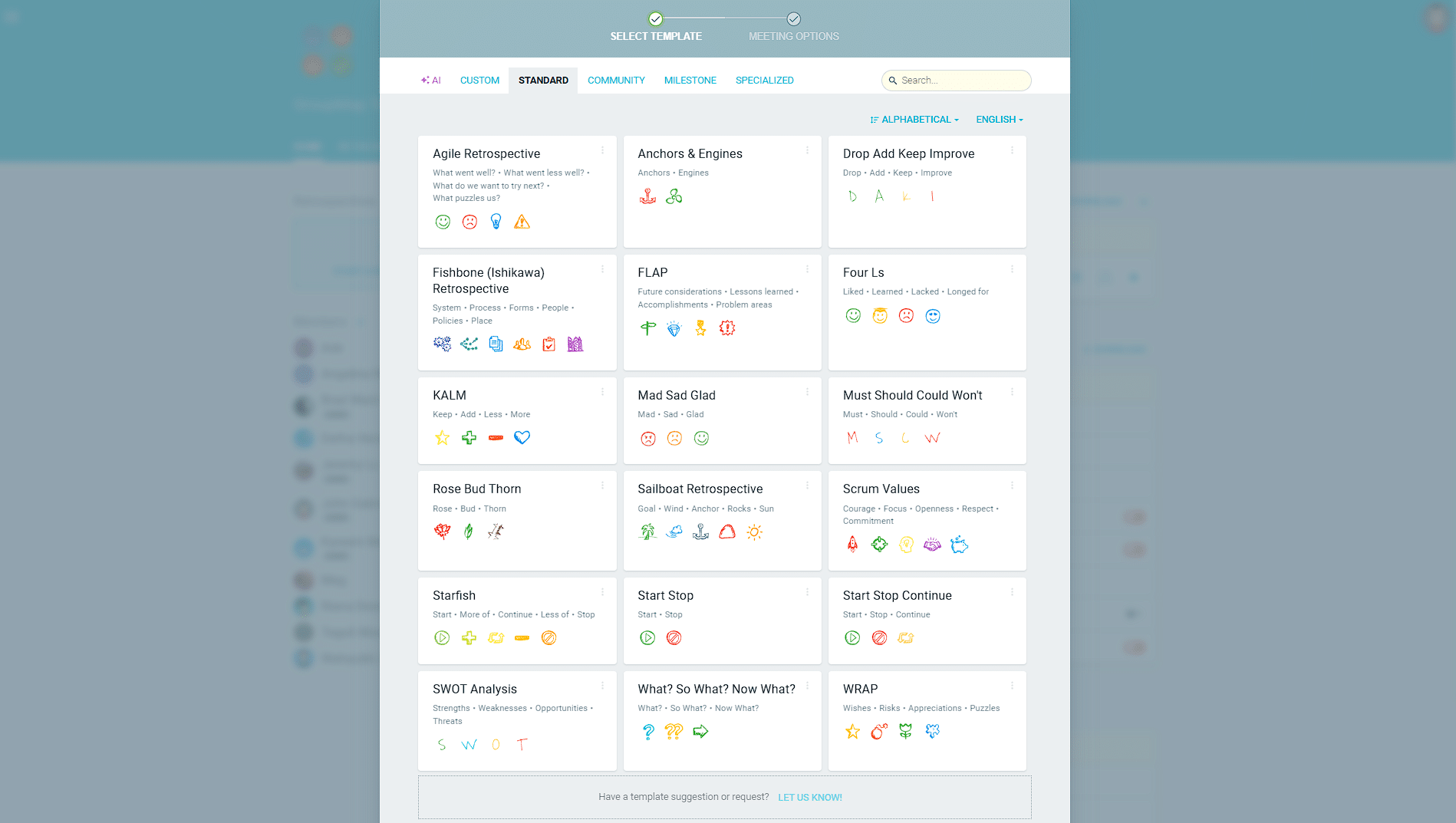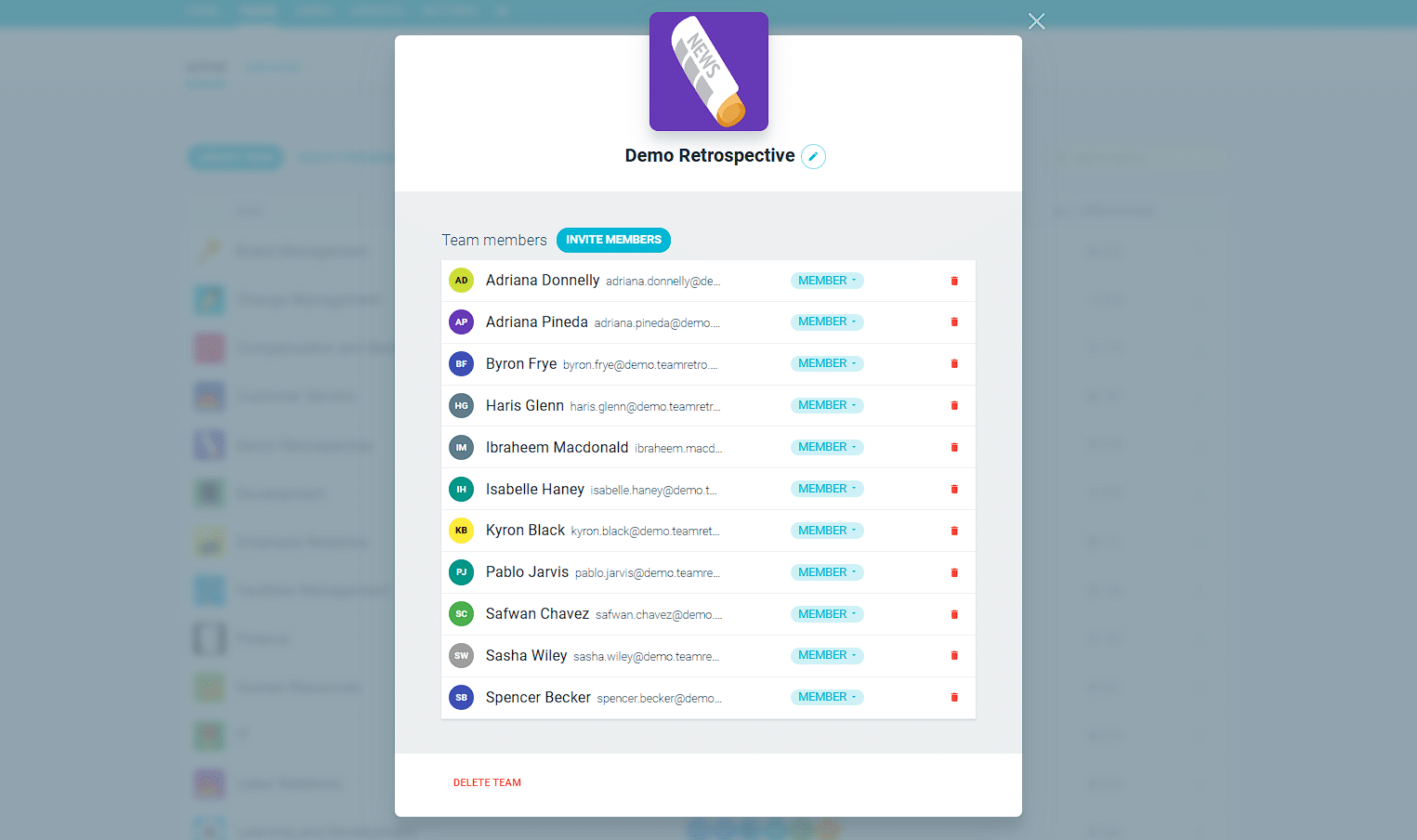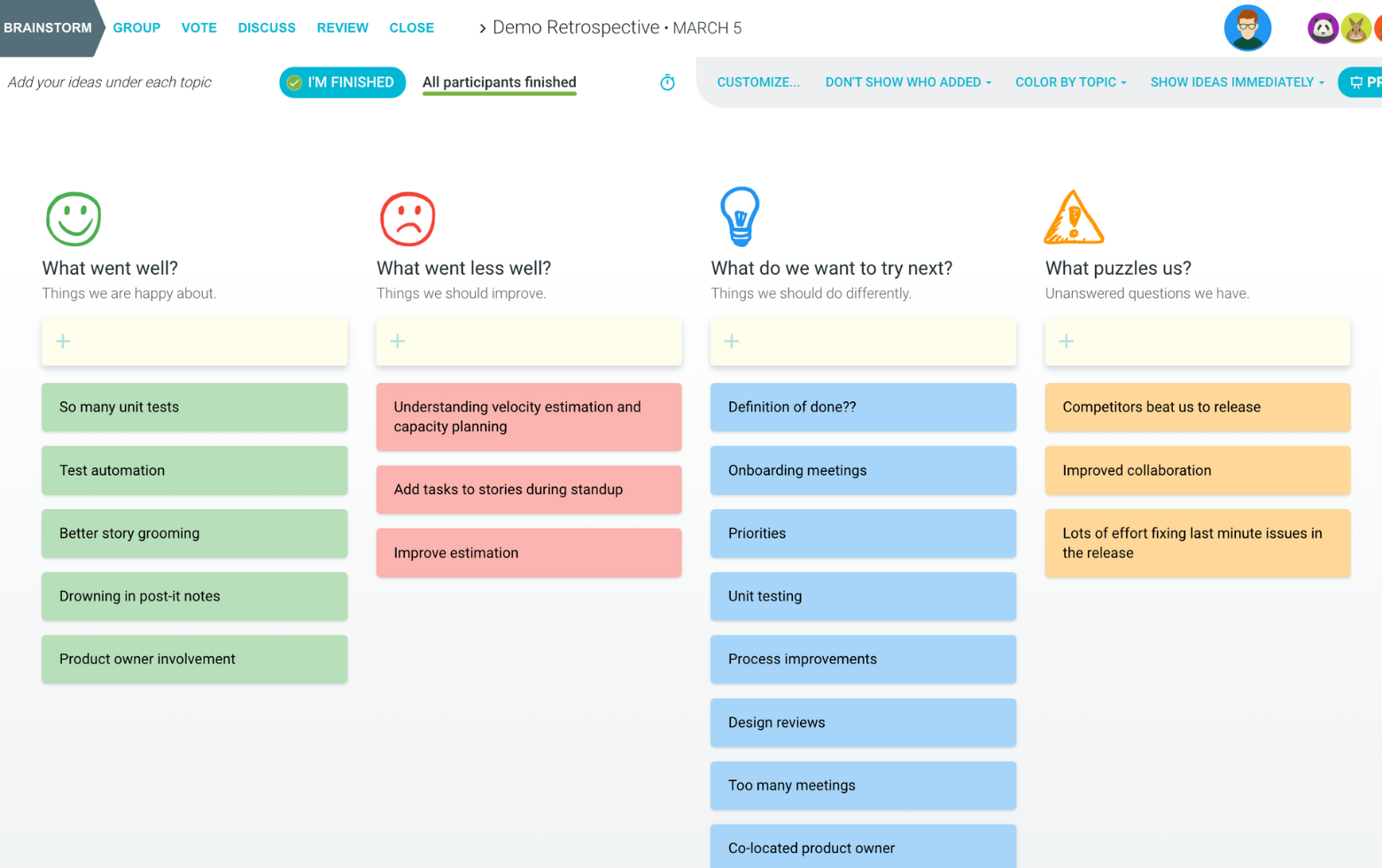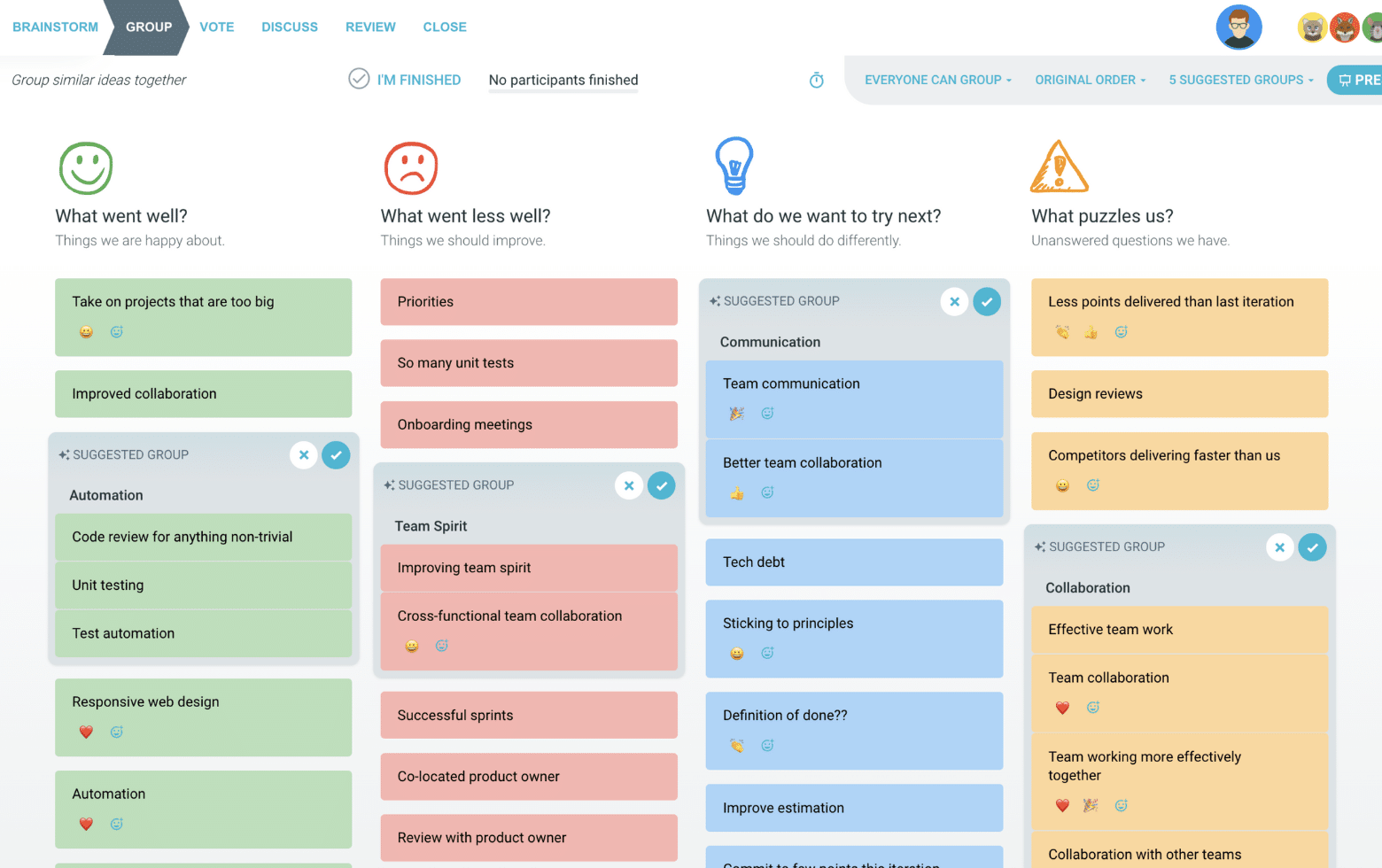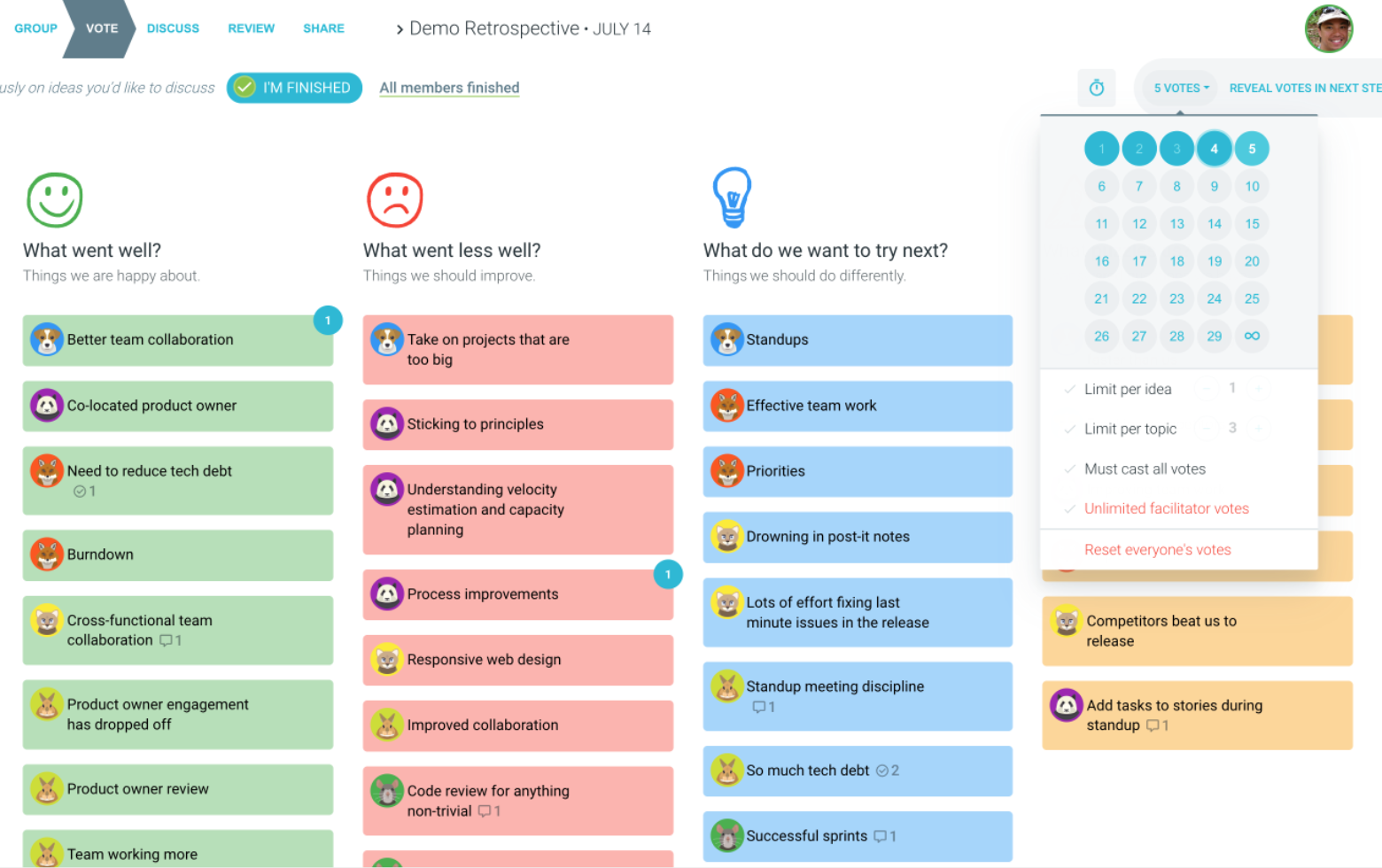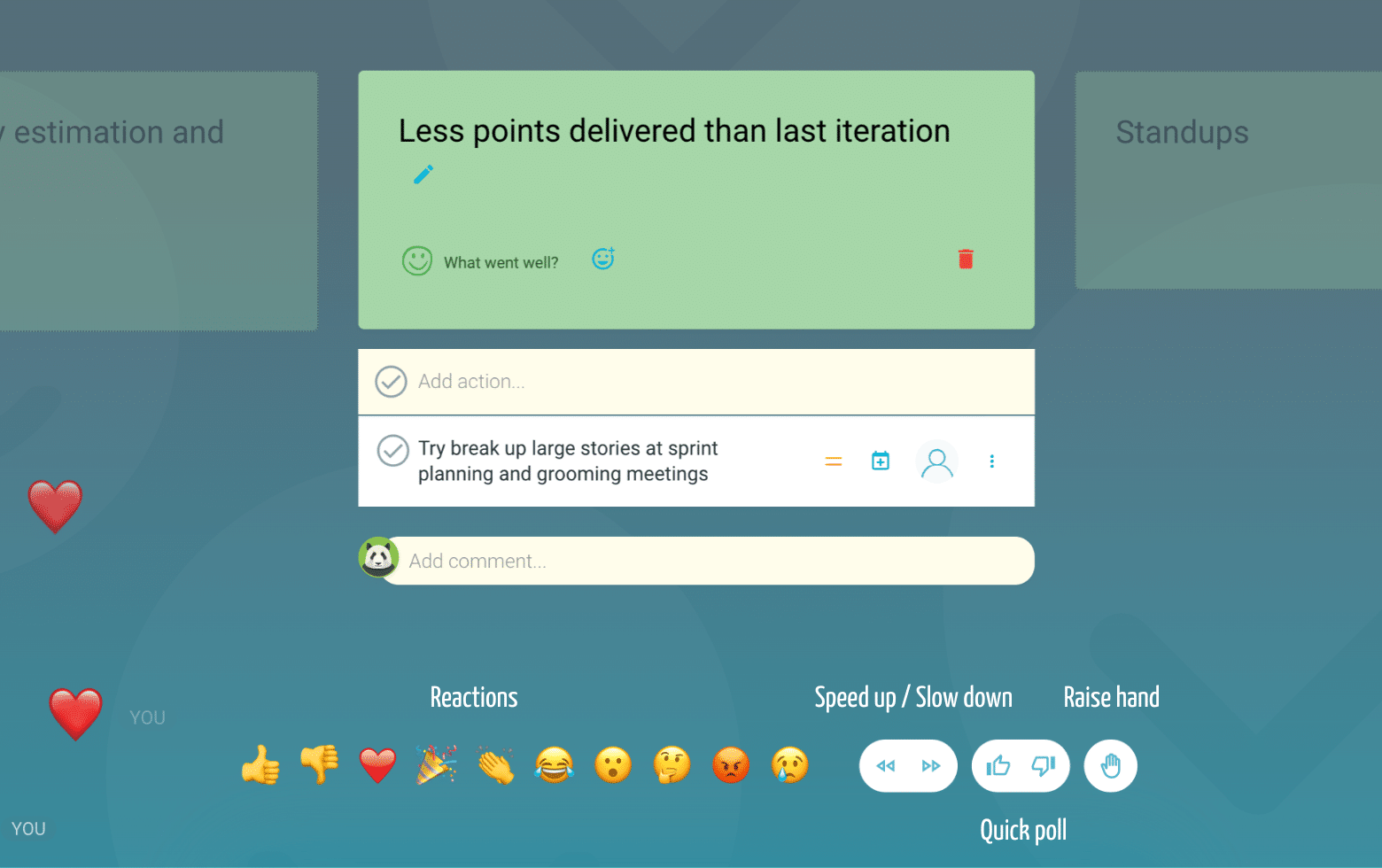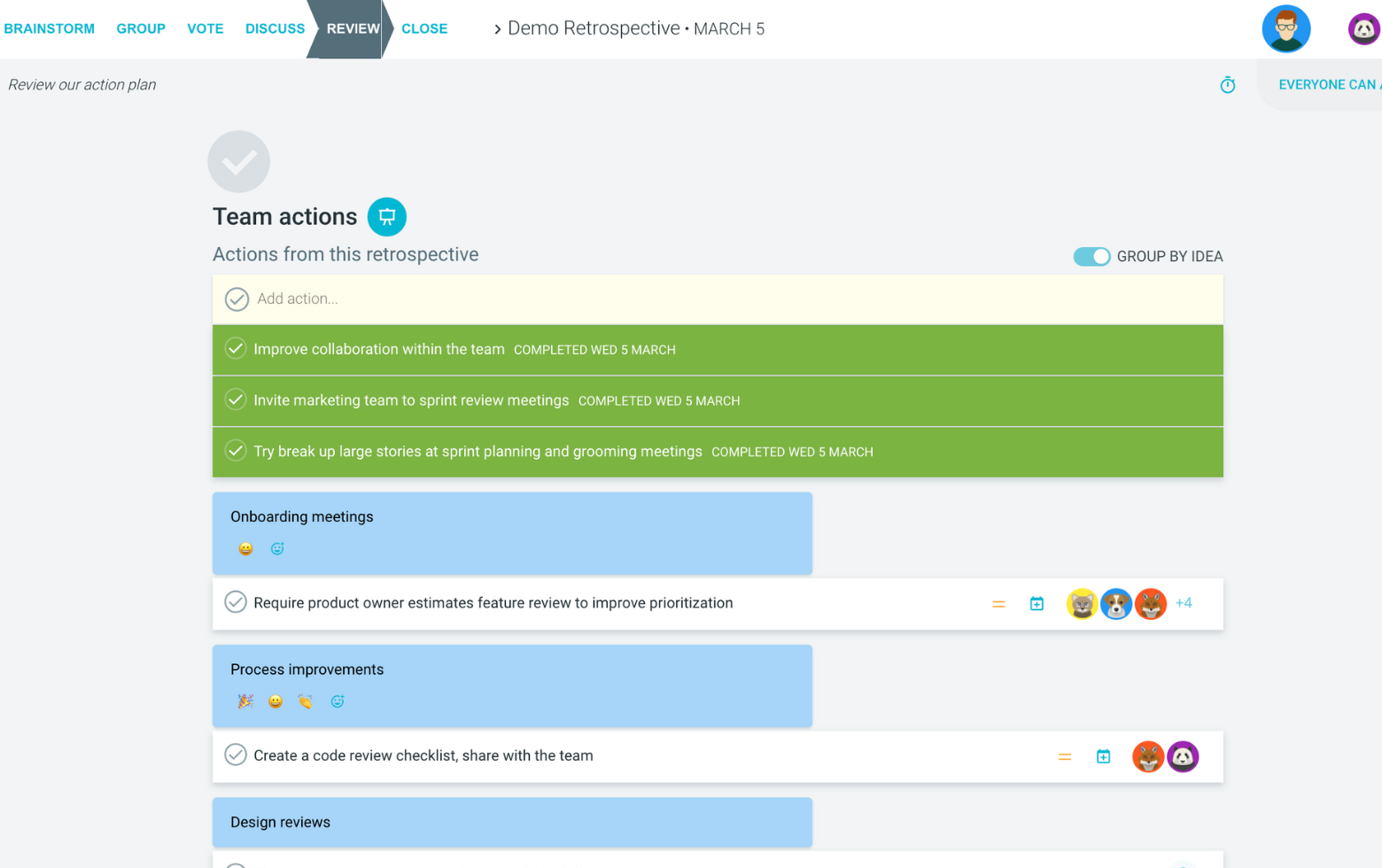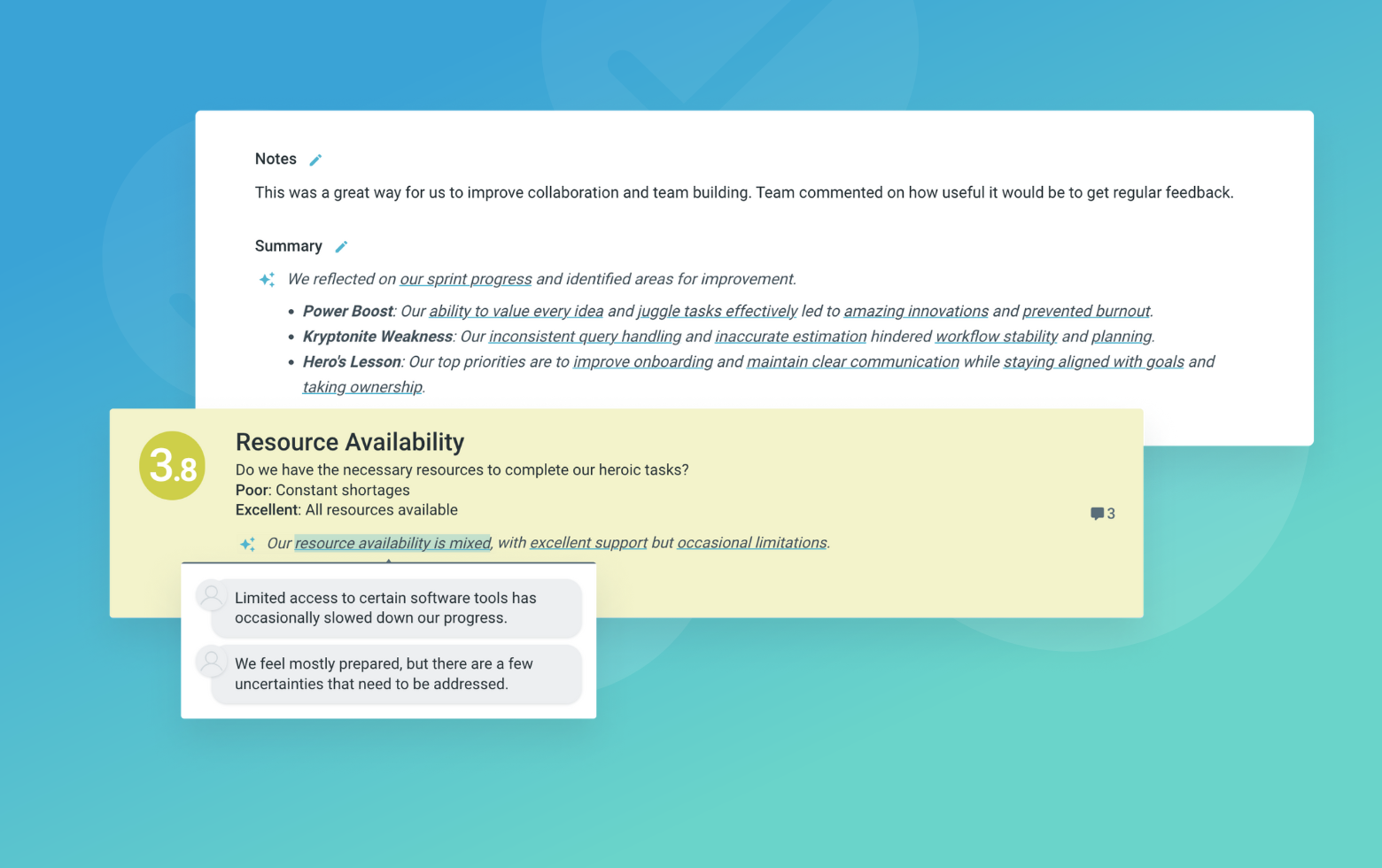The Leadership Effectiveness Retrospective is a structured activity designed to help leadership teams reflect on their performance, team dynamics, and overall effectiveness. It provides a safe space for open and honest discussions, allowing leaders to identify strengths, areas for improvement, and actionable steps to enhance their collective leadership capabilities.
This retrospective follows the classic retrospective format, with tailored topics that encourage leaders to analyze their decision-making processes, communication styles, conflict resolution approaches, and alignment with organizational goals. By fostering self-awareness and constructive feedback, the activity aims to strengthen the leadership team's cohesion, accountability, and ability to drive positive change.
The Leadership Effectiveness Retrospective has been widely adopted by companies seeking to cultivate high-performing and self-reflective leadership teams.
What is The Leadership Effectiveness Retrospective
Our Achievements
What were our most significant accomplishments as a leadership team?
This topic encourages leaders to reflect on their collective achievements and successes. Facilitators should guide the discussion towards identifying specific instances where the leadership team excelled, such as successful initiatives, effective decision-making, or overcoming challenges. Encourage participants to share concrete examples and highlight the factors that contributed to their achievements.
Areas for Improvement
What aspects of our leadership could be enhanced or improved?
This topic encourages leaders to identify areas where they can grow and improve as a team. Facilitators should create a safe and non-judgmental environment for open and honest feedback. Encourage participants to be specific about the challenges they faced, the root causes, and potential solutions. Remind the team that self-reflection and continuous improvement are essential for effective leadership.
Strategic Alignment
How well did our actions and decisions align with the organization's vision and goals?
This topic encourages leaders to evaluate their strategic alignment and ensure their actions and decisions are consistent with the organization's overall vision and goals. Facilitators should guide the discussion towards identifying instances where the leadership team's actions supported or deviated from the organization's strategic objectives. Encourage participants to analyze the root causes of any misalignments and propose strategies to maintain a clear strategic focus.
Stakeholder Feedback
How well did we incorporate feedback from key stakeholders into our decisions?
This topic focuses on the leadership team's ability to gather and incorporate feedback from key stakeholders, such as employees, customers, partners, and shareholders. Facilitators should encourage leaders to reflect on their stakeholder engagement practices and identify areas where they could improve their listening and responsiveness. Discuss the importance of considering diverse perspectives and balancing competing interests while making decisions that align with the organization's values and goals.
Team Dynamics
How well did we collaborate and leverage our collective strengths as a team?
This topic focuses on the leadership team's internal dynamics, collaboration, and ability to leverage each member's unique strengths and perspectives. Facilitators should encourage open discussions about team norms, communication patterns, and decision-making processes. Explore areas where the team excelled in collaboration and instances where conflicts or misalignments hindered their effectiveness. Identify opportunities to enhance trust, respect, and constructive debate within the leadership team.
Suggested icebreaker questions
- If our leadership team were a famous band or musical group, which one would we be and why?
- Share a leadership lesson or experience that has significantly shaped your approach as a leader.
Ideas and tips for your retrospective meeting
- Encourage open and honest feedback by creating a safe and non-judgmental environment.
- Ensure all voices are heard and valued, regardless of position or tenure within the leadership team.
- Focus on constructive criticism and actionable solutions, rather than dwelling on past mistakes or assigning blame.
- Consider involving an external facilitator or coach to provide an objective perspective and ensure impartiality.
- Follow up on the insights and action items identified during the retrospective to drive continuous improvement.
- Celebrate successes and achievements, but also embrace opportunities for growth and development.
.
How to run effective meetings with TeamRetro
Start Your Session in a Click
Log into TeamRetro and choose your template. Customise questions and the workflow to create your perfect retro for your team.
Create Your Team Easily – No Separate Accounts Needed
Brainstorm Individually – Free From Bias
Smart Grouping for Faster Insights
Fair, Flexible, and Fast Voting
Engage, React, and Capture Key Insights
Walk your team through ideas one by one with Presentation Mode. Stay in sync, spark real-time discussions, and capture feedback with comments, live reactions, and polls—all in one place.
Turn Ideas Into Action
Propose next steps with team buy-in, get AI-powered action suggestions, and keep everything in one place. Committed actions sync to your personal dashboard and integrate with your workflow tools—keeping you on track.
Save, Share, and Stay on Track
Get quick AI-powered summaries, add facilitator notes, and store retrospectives in your library for easy access. Schedule your next session and track published actions to keep your team accountable at the next retro.
Turn Team Data into Actionable Insights
Uncover trends, common themes, and key engagement metrics at a glance. Track sentiment shifts, analyze conversations, and monitor completed actions to drive continuous improvement.
